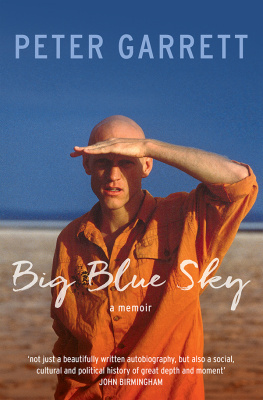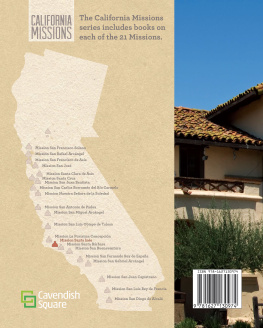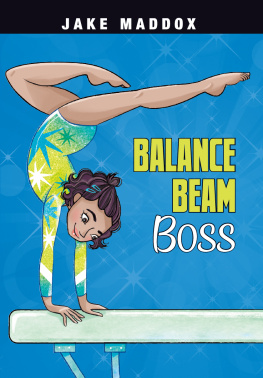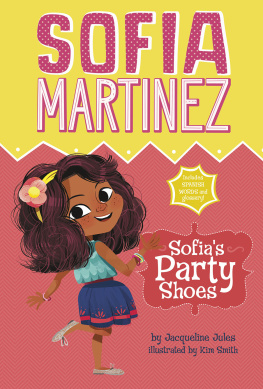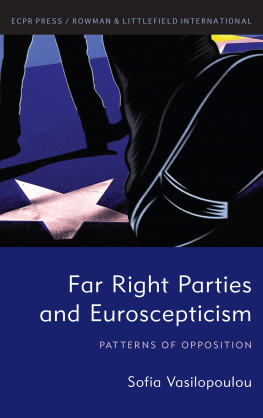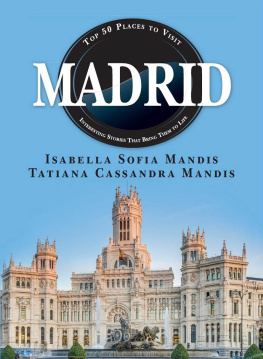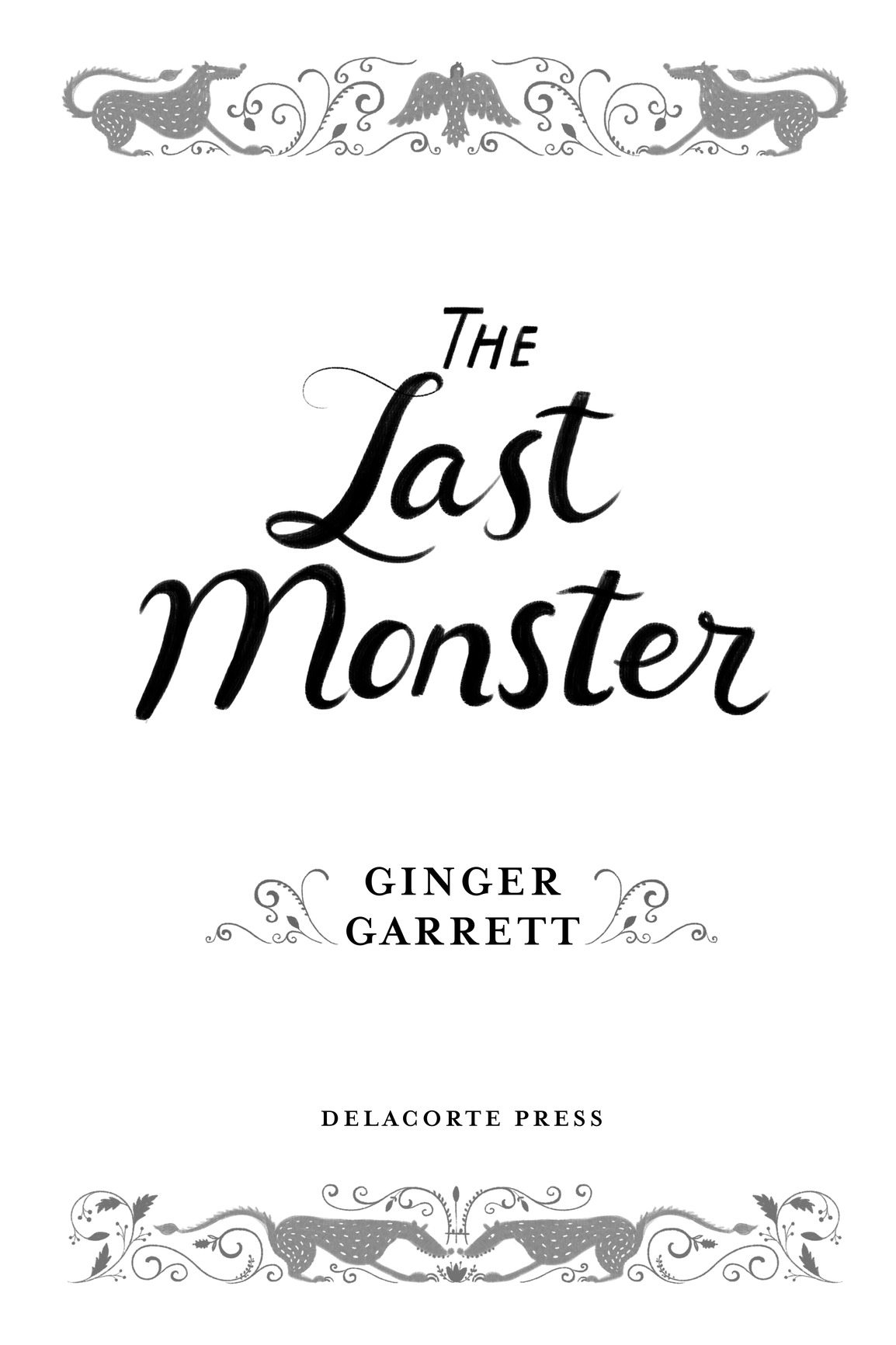This is a work of fiction. Names, characters, places, and incidents either are the product of the authors imagination or are used fictitiously. Any resemblance to actual persons, living or dead, events, or locales is entirely coincidental.
Text copyright 2016 by Ginger Garrett
Cover art and interior illustrations copyright 2016 by Dinara Mirtalipova
All rights reserved. Published in the United States by Delacorte Press, an imprint of Random House Childrens Books, a division of Penguin Random House LLC, New York.
Delacorte Press is a registered trademark and the colophon is a trademark of Penguin Random House LLC.
Visit us on the Web! randomhousekids.com
Educators and librarians, for a variety of teaching tools, visit us at RHTeachersLibrarians.com
Library of Congress Cataloging-in-Publication Data
Garrett, Ginger.
The last monster / Ginger Garrett. First edition.
pages cm
Summary: Thirteen-year-old cancer survivor Sofia has been chosen as the next Guardian of a book called The Bestiary, an ancient text. Drawn into violent and unpredictable mysteries, Sofia learns that these misunderstood monsters from the book are in danger and she is the only one who can save them Provided by publisher.
ISBN 978-0-553-53524-2 (hc) ISBN 978-0-553-53525-9 (glb) ISBN 978-0-553-53526-6 (ebook)
[1. MonstersFiction. 2. CancerFiction. 3. AmputeesFiction. 4. People with disabilitiesFiction.] I. Title.
PZ7.1.G375Las 2016
[Fic]dc23
2015003381
eBook ISBN9780553535266
Cover design by Sarah Hokanson
Random House Childrens Books supports the First Amendment and celebrates the right to read.
v4.1
ep
Contents


To every reader who
still checks under the bed at night

 Friday, February 21
Friday, February 21 

I had to pick up a new leg after school.
Dark storm clouds hung low over the Childrens Cancer Center of Atlanta. Mom took the last turn into the parking lot, and all the old familiar fears coiled around me. I groaned under their weight.
Mom glanced at me, worried.
It wont stop people from staring, I mumbled.
Is that really whats bothering you? she asked softly.
I glanced at her and realized her knuckles were white. She was gripping the steering wheel as if it were a life preserver. Coming here was just as hard for her as it was for me.
Im fine, I lied. The worst is over, isnt it?
She slowed the car as we approached the entrance. Ill let you off at the front door, in case it starts raining, she said. But wait for me before you go back.
I nodded as I glanced out the car window. A hawk circled overhead, hunting some small, frightened thing that hid in the shrubs by the entrance. The bird screamed when it saw me, a shrill welcome.
Mom stopped in front of the double doors before leaning over to give me a quick peck on the cheek. Her lips were cold. This was our last big appointment for four weeks. Wed basically lived here for two months last year, from the end of October until just after New Years; then we had switched to outpatient visits. After a month of rest to build my strength, I had started physical therapy. So this place had been my second home for almost four months. Now the idea of freedom felt surreal. Free was a strong word, though. It was more like Id gotten extra length on my leash. I still needed to come back. Cancer was a part of my life that I would never escape.
The wind moaned as I opened the car door. I swallowed hard, my stomach in knots, as if this place were the nightmare I would never wake up from.
Inside, the TV in the waiting room was tuned to a twenty-four-hour health channel. I settled into a vinyl-cushioned chair that wheezed when I sat. The volume was so loud no one noticed. A special feature called Meet Your Meat was playing, a behind-the-scenes look at how meat products are manufactured. In the corner, a coffee machine sat undisturbed, its electric red eye watching us all.
Sausage casings are made from the intestines of pigs, horses, or sheep. Machines remove the fat and mucus before extruding the final casing, which will give some lucky sausage that satisfying snap.
My eyebrows shot up in horror. Sausages were like babies; I had a general idea of how they were made, but I didnt want the clinical details. I glanced behind me, praying Mom would find a parking spot soon. We didnt do the free valet parking anymore. Tipping required cash, and we rarely had any now.
I noticed a boy about seven or eight years old, hunched over, holding a beach sand pail in front of his mouth in case he vomited. A little bit of drool clung to his chin. He still had his hair, though, so he was probably a new patient, trapped between terror and denial. He cringed as images of greasy pink sausages flashed above his head.
The TV was mounted on the wall. If there was a remote control, I had never found it. The only way to change the channel would be to reach way up and press the buttons, and somebody needed to do that fast before the poor little guy hurled again. He glanced at me and nodded weakly in the direction of his mother. She was standing by the windows, chatting furiously on a cell phone, her back to us. Fat drops of sleet began pelting the tinted lobby windows. A bright whip of lightning ripped across the sky and split in five directions, like a giant claw. Strange, even for a city known for its weird weather.
And now well take a closer look at ground beef. The name itself is misleading, since it includes skin, connective tissue, fat, and even bone.
The kid put his head down and retched loudly into the bucket. I stood and walked to the TV, praying the other kids didnt notice how one of my legs moved differently from the other one. The prosthesis I wore was too big, and it made my gait clumpy. The new prosthesis would make my gait very natural, but of course everyone at school would stare anyway, trying to figure out which leg was real. They got them mixed up.







